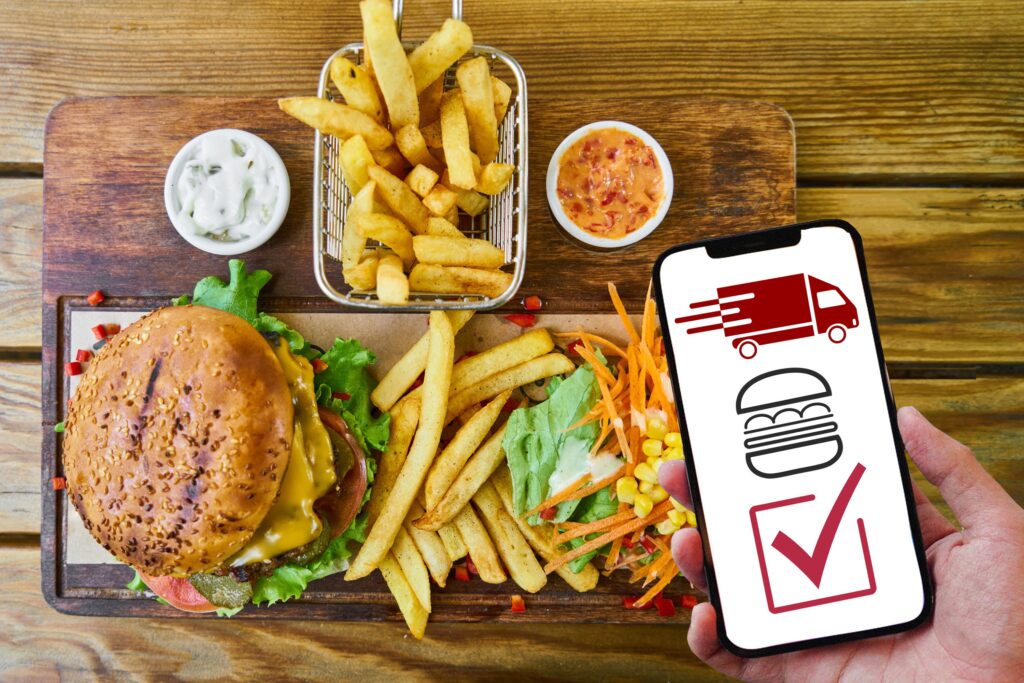How To Order Food From Various Applications?
The Global online food ordering and delivery services stand at 126 billion dollars in 2020 in market capitalization and are poised to reach the $200 billion mark by 2025.
Gone are the days when one has to make an effort to get his favorite food. A single call or few clicks on an app and all sorts of delicacies will be delivered to your doorstep. Yes, it’s that easy now, and it’s all possible thanks to the online food ordering and delivery services. The rise of these on-demand food delivery services has been revolutionary, and recent years have seen a tremendous surge in their popularity. Such is the popularity of online food ordering and delivery platforms that they have quickly amassed a net market capitalization of a staggering $126 billion. Even in the pandemic-ridden year of 2020, their growth didn’t slow down and is expected to reach $200 billion by 2025.
Let’s discover the top On-demand food delivery platforms ruling the Indian market.
How Online Food Delivery Platforms Operate?
Let us learn How To Order Food From Various Applications in-depth. Before we check out top On-demand food delivery platforms, let’s have a brief overview of how these platforms work. Online food delivery platforms link customers and hospitality establishments like restaurants, ensuring that the food promptly reaches the customers once ordered. These platforms operate through an online portal or an app, which lists all the restaurants in partnership with that platform. Customers place the order on the app, which is then completed through a network of delivery personnels, and the food is delivered to the customer’s place.
Top On-demand Food Delivery Platforms.How To Order Food From Various Applications?
Zomato
Zomato is truly the king of online food ordering and delivery services in India. Such is the popularity of Zomato that it constitutes almost 45% market share in the food servicing business. After the successful launch of its IPO, Zomato is now among the top valued companies in India, with a cash chest of $13.3 billion. Furthermore, Zomato had also acquired the Indian operation of US-Based UberEats. It was a $350 million all-stock transaction deal that further strengthened its presence in India and gave wings to its expansion plans.
Swiggy
Zomato’s biggest competitor, Swiggy, is another Indian company in the online food ordering and delivery business that enjoys quite a popularity among the masses. Founded back in 2014, Swiggy started its operation in Bangalore then gradually expanded it to other Indian cities. It now operates in more than 600 Indian cities and has a tie-up with more than 1,40,000 restaurants. Swiggy is growing fast in India, and with recent funding of $1.25 billion from soft banks, its market capitalization has crossed the $5.5 billion mark.
Foodpanda
Although headquartered in Berlin, food panda has a strong presence in India too. In 2017 OLA acquired food panda for an all-share deal. Food panda has an intuitive app interface and offers fast and reliable food delivery services. The company claims about one lakh order processing per day with a strong base of 25000 restaurants under its umbrella.
Impact of ordering food online
Online food ordering has changed the restaurant industry and consumer eating habits in many ways:
- Convenience: Customers can browse the menu, order and pay from the comfort of home or on the go. This convenience has changed the way people eat.
- More variety: Online platforms provide access to a diverse range of restaurants and culinary styles, allowing customers to explore new flavors and experiences.
- Increased restaurant revenue: Online food ordering has allowed restaurants to reach a wider customer base, thereby increasing revenue and helping them survive during difficult times.
- Contactless dining: Especially amid the COVID-19 pandemic, contactless food ordering and delivery has become important, ensuring safety and reducing the need for physical interaction.
- User reviews and ratings: Online platforms often offer customer reviews and ratings, providing valuable information about the quality of food and service and helping customers make informed choices.
The Future of Online Food Ordering
How To Order Food From Various Applications? As online food ordering continues to grow, here are some trends and considerations for the future;
- AI integration: Artificial intelligence will play a larger role in personalizing food recommendations, optimizing delivery routes, and improving the overall customer experience.
- Sustainability: There is an increasing focus on sustainability in food supply, including eco-friendly packaging and delivery options, to reduce environmental impact.
- Ghost kitchens: The rise of ghost kitchens, which cater exclusively to online orders, will continue, facilitating more efficient and cost-effective food preparation and delivery.
- Virtual dining experiences: With the help of virtual reality and augmented reality, online food ordering platforms can offer immersive dining experiences, allowing customers to “visit” restaurants at once.
- Healthy and Special Menus: The demand for specialized and health-conscious diets is increasing, which will lead to more menu options and customization.
Conclusion
How To Order Food From Various Applications? It’s undeniable that ordering food online has changed the way we eat, bringing convenience, variety and safety. With the continued integration of technology and the industry’s ability to respond to evolving customer preferences, the future of online food ordering promises even more exciting and innovative dining experiences . As technology continues to advance, it’s clear that online food ordering will remain an important and dynamic part of our modern food culture.



